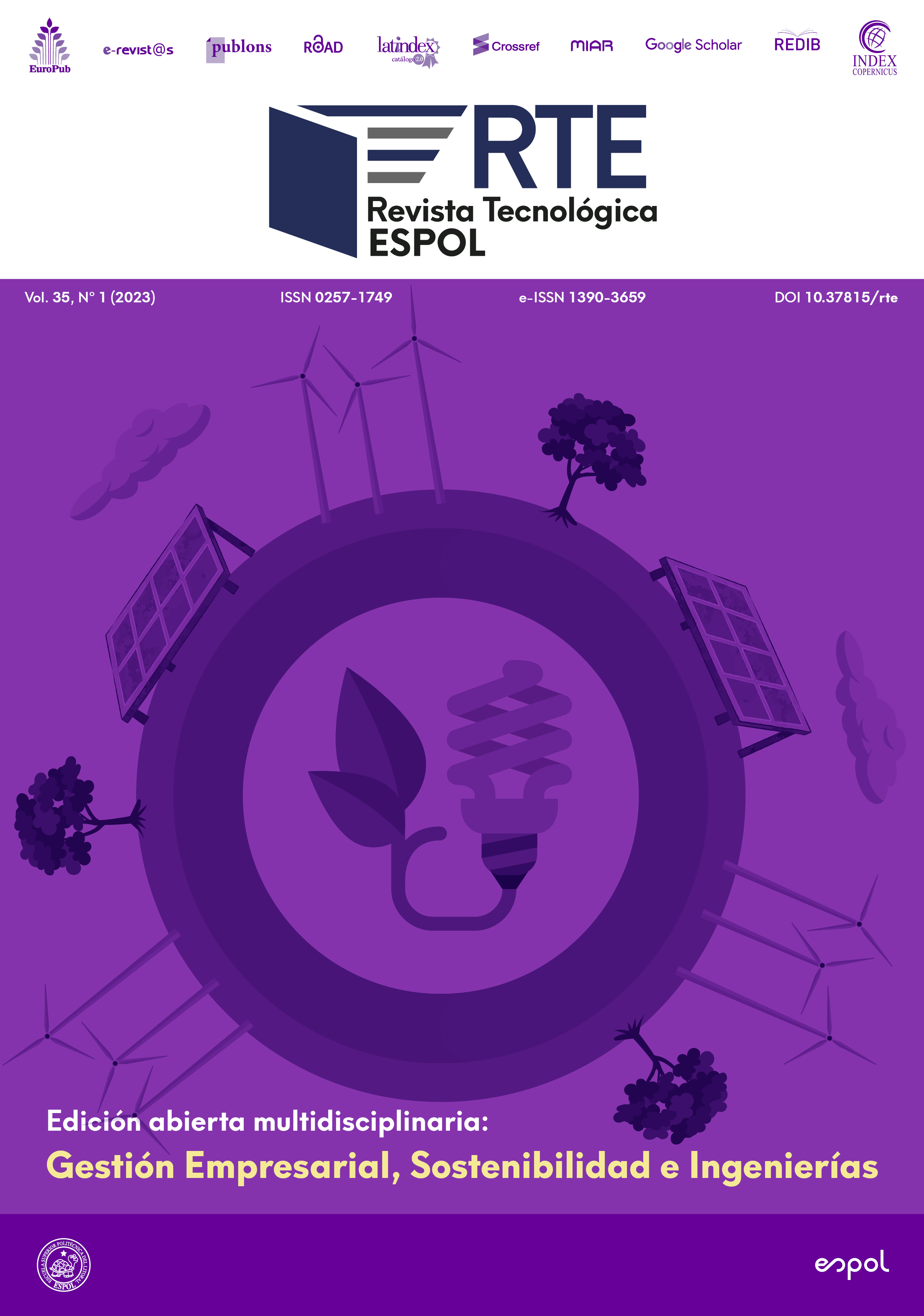Los programas de formación dual han mostrado ser de gran ayuda en el proceso de instruir a profesionales altamente capacitados. Los países que han adoptado el modelo dual con éxito han visto como sus profesionales se han convertido en el motor de productividad de sus economías. Muy pocos países en Latinoamérica han adoptado este modelo de formación, y aunque en Ecuador se norme a la formación dual, RCP-SO-19-N°.282-2018, en la práctica no se ha adoptado este modelo. En este artículo se realiza un estudio en el marco de la formación dual con un enfoque en las empresas del giro de las tecnologías de información y comunicación (TIC). A través de un enfoque cualitativo se analizó la factibilidad de aplicar programas de formación dual en Ecuador y se determinó que en el campo de las TIC es necesario una mayor participación de las empresas privadas en la formación de estudiantes ya sea en formación dual o pasantías. Se determinó que es necesario comunicar e incentivar desde los organismos gubernamentales a las empresas y universidades, y que es necesario una mayor coordinación entre empresa y universidad para adoptar los programas de formación dual.

Esta obra está bajo una licencia internacional Creative Commons Atribución-NoComercial 4.0.
Referencias
AESOFT. (2011). Estudio de Mercado del Sector de Software y Hardware de Ecuador. Ecuador.
Anjum, S. (2020). Impact of internship programs on professional and personal development of business students: A case study from Pakistan. Future Business Journal, 6(1), 1-13.
Bravo, D., Peirano, C., Sevilla, M. P., & Weintraub, M. (1999). Formación Dual. Un Desafío para Chile.
Carranza, A. G., González, M. G. A., & Ojeda, R. E. P. (2016). Modelo de formación dual del Tecnológico Nacional de México. Revista de Investigación en Educación, 14(2), 170-183.
Carrasco Miró, A., Colombo Vilarrasa, C., Pozo, I. de B., & Salvans Subirats, G. (2021). Buenas Prácticas en Formación profesional dual en España. 14 indicadores europeos de calidad,102 ejemplos autonómicos - Publicaciones - Ministerio de Educación y Formación Profesional. Recuperado en octubre 4, 2022, de https://sede.educacion.gob.es/publiventa/d/25518/19/0
Ching-Chiang, L. W. C., & Carrera, D. F. (2020). Building a transition to the engineering fieldwork through project-based learning. In Experiencias e Investigaciones en Contextos Educativos (pp. 461-470). Dykinson.
Creswell, J. W., & Poth, C. N. (2016). Qualitative inquiry and research design: Choosing among five approaches. Sage publications.
Euler, D. (2013). Germany's dual vocational training system: A model for other countries?
Espinoza Freire, E. E. (2020). La formación dual en Ecuador, retos y desafíos para la educación superior y la empresa. Revista Universidad y Sociedad, 12(3), 304-311.
Federal Ministry for Economic Affairs, (2019). SMEs Digital Strategies for the digital transformation. Recuperado en julio 12, 2022, de www.bmwi.de.
Fougère, D., & Schwerdt, W. (2002). Are apprentices productive? KONJUNKTURPOLITIK-BERLIN-, 48(3/4), 317-346.
Franch Parella, J., & Carmona Hernández, G. (2018). The German business model: The role of the Mittelstand. Journal of Management Policies and Practices, 6(1), 10-16.
Garavan, T. N. (2016). A Strategic Perspective on Human Resource Development. Advances in Developing Human Resources. https://doi.org/10.1177/1523422306294492
Gessler, M., & Peters, S. (2017). Implementation of dual training programmes through the development of boundary objects: A case study. Educar.
Göhringer, A. (2002). University of Cooperative Education-Karlsruhe: The Dual System of Higher Education in German. Asia Pacific Journal of Cooperative Education, 2 (2), 53-58. Recuperado de: http://www.apjce.org/files/APJCE_03_2_53_58.pdf
Hernández, R., Fernández, C., & Baptista, P. (2014). Metodología de la Investigación (6ta ed.). D.F: McGraw Hill. Recuperado el 28 de noviembre de 2021
Hughes, C. (Ed.). (2016). Bridging the scholar-practitioner gap in human resources development. IGI Global.
Jawabri, A. (2017). Exploration of Internship Experience and Satisfaction Leading to better Career prospects among Business Students in UAE. American Journal of Educational Research, 5(10), 1065-1079.
Méndez Mantuano M. O., Solís Sierra M. N., & Morales Villacís M. del R. (2019). LA FORMACIÓN DUAL Y EL CAMBIO DE LA MATRIZ PRODUCTIVA DEL ECUADOR. Universidad Ciencia Y Tecnología, (02), 10. Retrieved from https://uctunexpo.autanabooks.com/index.php/uct/article/view/71
Noe, R., Hollenbeck, J., Gerhart, B., & Wright, P. (2006). Human Resources Management: Gaining a Competitive Advantage, Tenth Global Edition. New York, MA: McGraw-Hill Education.
Pogatsnik, M. (2018). Dual education: The win-win model of collaboration between universities and industry.
PROCHILE. (2012). Estudio de Mercado Servicio Desarrollo de Software en Ecuador. Chile.
PromPerú. (2011). ECUADOR – Perfil de Mercado de Software.
Por qué invertir en capacitación de empleados. (n.d.). Recuperado en julio 12, 2022, de https://negociosdigitalesmovistar.com/gestion/invertir-en-capacitacion-de-empleados-es-esencial-para-aumentar-la-productividad/
Reyes, T. (1999). Métodos cualitativos de investigación: los grupos focales y el estudio de caso. In Forum empresarial (Vol. 4, No. 1, pp. 74-87). Universidad de Puerto Rico.
Siegel, G., Sorensen, J. E., Klammer, T., & Richtermeyer, S. B. (2010). The ongoing preparation gap in management accounting education: A guide for change. Management Accounting Quarterly, 11(4), 29.
Sims, R. R. (2002). Organizational success through effective human resources management. Greenwood publishing group.
Ton, Z. (2014). The good jobs strategy: How the smartest companies invest in employees to lower costs and boost profits. Houghton Mifflin Harcourt.
Torres, M., Paz, K., & Salazar, F. (2006). Tamaño de una muestra para una investigación de mercado. Boletín electrónico, 2, 1-13.
Zeichner, K. (2010). Rethinking the connections between campus courses and field experiences in college-and university-based teacher education. Journal of teacher education, 61(1-2), 89-99.







